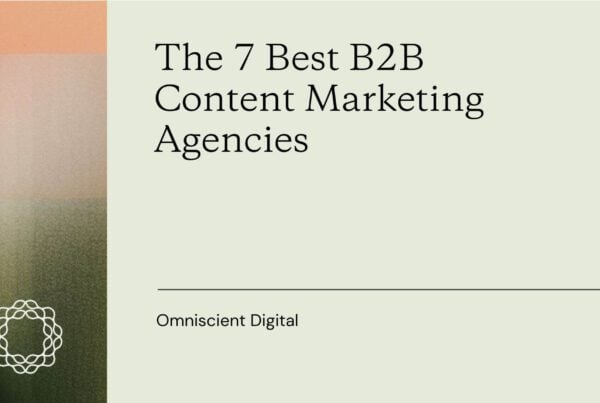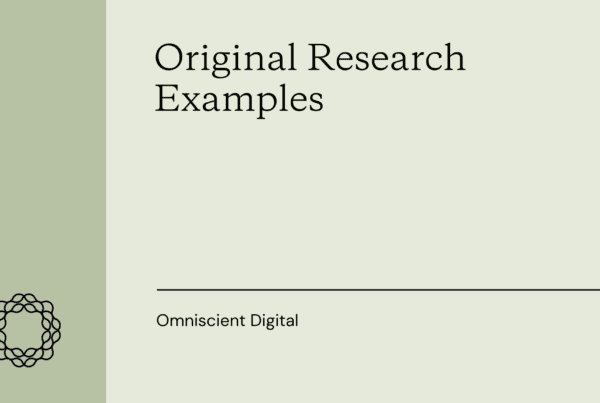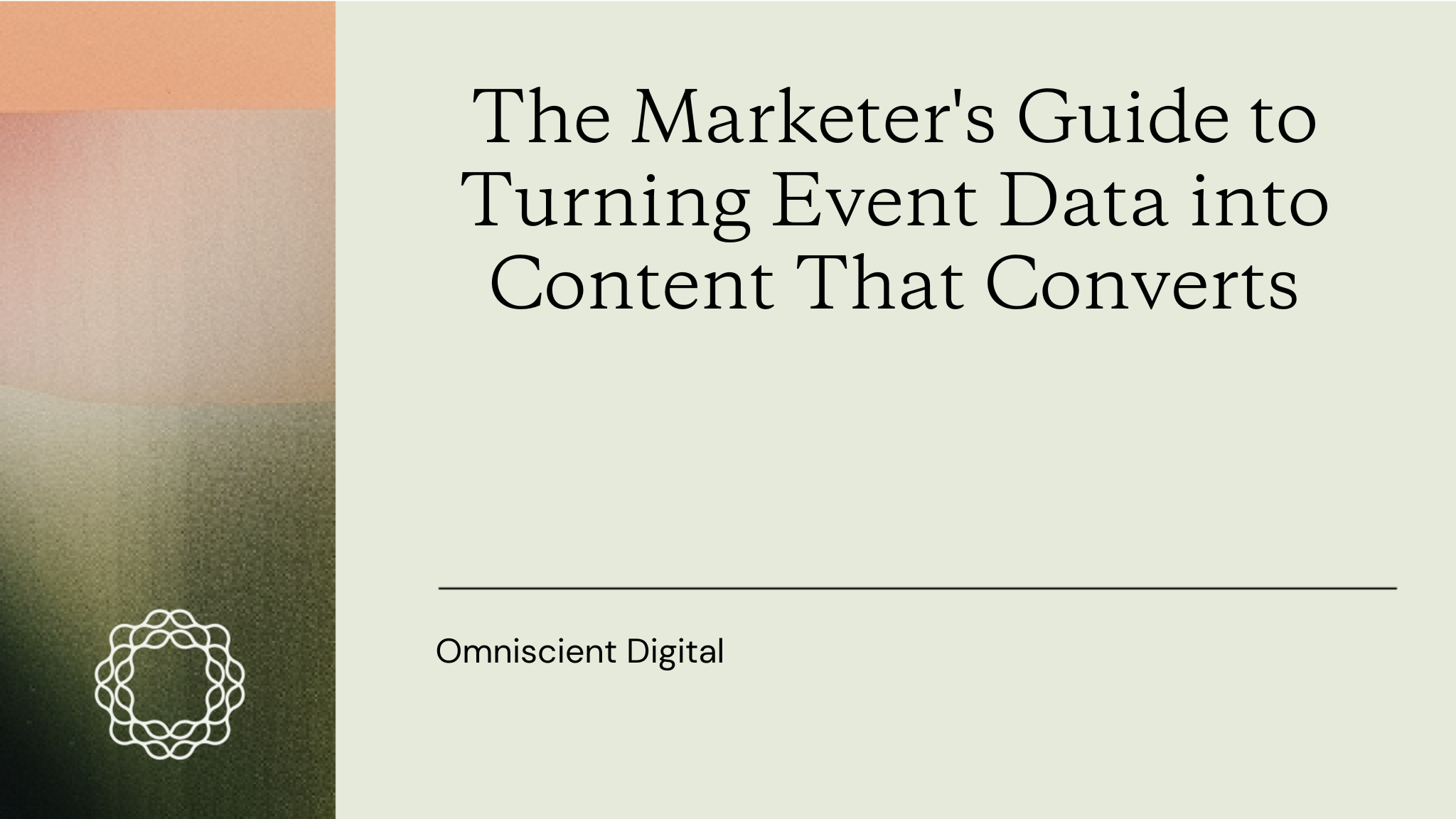
You’re sitting on a goldmine of information after every virtual event.
Think about it: virtual events aren’t just one-and-done presentations; they’re prime opportunities to capture immediate, valuable data and insights about your attendees.
If you can efficiently turn this event data into content campaigns, you’re not just extending the life of your event—you’re amplifying its reach and impact far beyond the live session. This isn’t just about optimizing engagement; it’s about boosting your return on investment by crafting future content that speaks directly to the unique needs and interests of your audience segments.
Ultimately, a truly effective event strategy isn’t built on guesswork, but on these data-informed decisions that fuel long-term success and make your next event even stronger.
Virtual Tours to Revenue: How Tours & Tickets Built a Content Powerhouse
When the world pressed pause in 2020, Tours & Tickets, a Dutch travel company, didn’t just stand still. They launched live virtual tours during quarantine, transforming a challenge into a massive opportunity. These weren’t just stop-gap measures; they were a rich source of critical intel. Their virtual events tapped into a highly engaged audience and, critically, produced high-value analytics on attendee behavior.
Tours & Tickets suddenly had a direct line into what their audience truly cared about: what they were interested in, what held their attention, and what truly made them respond. This wasn’t just data; it was the blueprint for their next big move.
Tours & Tickets didn’t just collect data; they weaponized it to fuel their content strategy. Here’s how they leveraged those insights:
- fueled a multimedia content engine: they didn’t just churn out articles; they developed engaging blogs, captivating videos, and dynamic social media content—each piece meticulously crafted from what their audience truly wanted to see.
- transformed email newsletters into must-reads: they didn’t guess what subscribers wanted. Instead, they fine-tuned their newsletters, delivering content precisely aligned with customer preferences, making every send a valuable touchpoint.
- dominated search with precision-targeted keywords: this wasn’t about vague SEO. They optimized their content for the exact keywords their audience was searching, ensuring their insights translated directly into increased visibility and organic traffic.
And what’s more, once travel resumed, that pre-written content became their secret weapon, not just attracting customers, but driving significant sales. It was like having a fully stocked arsenal ready the moment the gates reopened.
Crafting Compelling Narratives from Event Experiences
To effectively turn virtual event data into successful content marketing campaigns, you must determine the most significant takeaways that resonated with and influenced the attendee experience.
In an effective transformation of virtual event data into successful content marketing campaigns, it is essential to determine the most significant takeaways that resonated and influenced the attendee experience. Sure, but how do you do that? Contemporary event planning software can help you tracktracks important data in real-time to deliver and delivers actionable insights onreflective of attendee engagement and overall event success.
Consider, for example, how Tours & Tickets, an Amsterdam canal cruise tour virtual event, did just this, which provided actionable data and enabled marketing teams with actionable data to create on-demand assets, extending the event lifecycle and supporting marketing strategy.
- Identify Key Moments and Powerful Testimonials
Don’t just glance at your post-event metrics; scrutinize them to unearth what truly captivated your audience. Every data point, from social shares to in-app engagement, is a clue.
Your event apps and dashboards are constantly tracking critical signals in real-time—think session duration, engagement rates, comments, and survey responses. These aren’t just numbers; they’re the vital intelligence your content team needs to supercharge follow-up marketing campaigns and streamline workflows.
This meticulous analysis isn’t just smart; it ignites a powerful feedback loop, empowering you to maximize ROI and precisely customize every future event.
- Structure Your Stories for Maximum Platform Impact
Don’t just churn out content; deliberately structure your event insights for each platform to drive maximum engagement and reach. Think about it: long-form, thought-leadership content packed with event takeaways and marketing strategy thrives on LinkedIn and your blog.
But on Instagram and Facebook? That’s where visual narratives and punchy short quotes truly shine. And for email newsletters? Focus on compelling highlights with undeniable calls-to-action.
This isn’t just about spreading content wide; it’s a multi-channel strategy that streamlines your workflows, ensures your message hits every audience segment, and keeps your content team from drowning.
Applying Visual Storytelling Techniques
Visual storytelling isn’t just a creative option; it’s a strategic imperative. You need to use it to transform the expansive experience of your virtual events into tight, actionable messages. Think about it: research from 3M Corporation proves visuals boost learning retention by up to 400%, making them absolutely essential for your event content to stick.
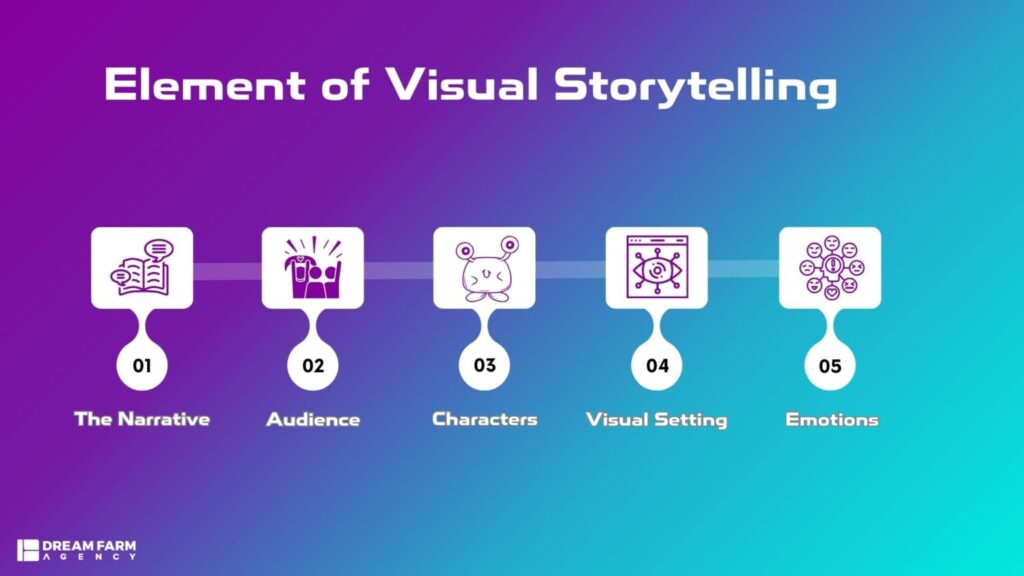
Beyond just helping information sink in, visuals evoke emotions, solidify your brand character, and simplify complex data for every audience level, ensuring your insights truly resonate.
- Use Compelling Visuals and Graphics
Your event tech platforms don’t just collect data; they generate massive quantities of engagement and behavior insights. Don’t let that powerful intel sit dormant. Instead, visualize that data with compelling infographics, intuitive dashboards, and clear charts. This lets you quickly pinpoint critical patterns—like peak session times, which sessions truly resonated, or what topics sparked your audience’s prime interest.
Imagine an infographic that instantly shows attendee demographics alongside engagement heatmaps. That’s a powerful snapshot, allowing you to make strategic marketing decisions at a glance and move your content efforts forward with confidence.
According to Content Marketing Institute, visuals aren’t just eye candy; they’re a conversion engine. Their research reports that content featuring visuals sees 94% more consumption than text-only material. But it’s not enough to just throw images in. Your visuals must be brand-compliant and perfectly aligned with your marketing strategy to truly project credibility and professionalism.
What really seals the deal? Integrating your CRM and analytics tools allows these visuals to refresh in real-time. This isn’t just a perk; it’s the critical link for agile decision-making, ensuring your visual strategy is always sharp and impactful.
- Integrate Interactive Storytelling Elements
Interactive elements can transform passive viewers into active participants.Live polls, quizzes, click-to-video, and immersive 360° tours aren’t just engaging; they’re proven to significantly boost your engagement metrics. Need proof? A DemandZEN found interactive content can double the conversion rate of static content.
But the power doesn’t stop there. Weaving interactivity into your repurposed event assets also strengthens viewer retention. Metrics clearly show that interactive-enabled pages can increase time-on-site by nearly 50%.
This isn’t just about grabbing attention; this kind of dynamic interactivity deepens understanding, sparks an ongoing dialogue, and builds stronger viewer loyalty. The bonus? It provides marketers with rich behavioral insights, empowering you to refine future event planning and sharpen every content marketing function.
Why Your Virtual Event Data is a Strategic Asset
Virtual events don’t just happen; they generate a wealth of real-time data, enabling marketers to make intelligent, data-informed decisions that elevate both event planning and overall marketing strategy.
Advanced event technology lets you monitor attendee behavior, engagement, and interests at every single touchpoint. This level of insight allows you to precisely optimize event functions and personalize follow-up campaigns, turning every interaction into a strategic advantage.
Uncovering Your Audience: The Data You’ll Collect
To get a holistic picture of your audience, successful event management demands collecting a broad array of data. This includes demographic information like industry, job function, and geography, which helps you segment audiences for custom campaigns.

You’ll also gather behavioral information from event apps—such as session attendance, consumption of on-demand content, and social media engagement—providing richer insights into attendee interests.
Don’t overlook qualitative feedback in the form of open-ended questions, surveys, and polls, as these truly enrich your understanding of the attendee experience. And for planning future in-person or hybrid events, technical data like connection quality and device type offers crucial guidance.
Collectively, these diverse data points yield actionable insights that guide smarter workflows and streamline your overall event functions.
Your Arsenal for Insight: Tools for Data Analysis
Once you’ve accumulated your data, you need to analyze it with expert dashboards and software solutions. Platforms like Zoom Analytics and Hopin, for instance, offer real-time overviews of behavior and participation. Integrate these with CRM solutions like Salesforce, and use the help of managed services for salesforce like Think Beyond, to seamlessly facilitate customized follow-up campaigns, directly driving your marketing strategy goals.
Beyond basic overviews, specialized visualization tools such as Microsoft Power BI and Tableau can interpret complex patterns within the data. To make sense of qualitative answers, text analysis software (e.g., MonkeyLearn) can excavate main themes and sentiment.
These insights become the bedrock for effective content pieces—blogs, infographics, and videos—that accurately reflect attendee interests and maximize your ROI. This data-driven approach not only optimizes your event planning but also simplifies the efficiency of functions within your marketing teams.
Mapping Data to Content: Transforming Insights into Engagement
So, what comes next? You’ll need to take that data and figure out where it should go. Once you’ve extracted actionable insights from your virtual events, it’s time to transform them into engaging, high-impact content. This crucial step drives your event ROI and supercharges your overall marketing strategy.
By choosing the right content formats and optimizing your workflow, you make complex data accessible, consumable, and incredibly shareable across every channel. This is where your blogs, videos, and infographics become powerful tools.
Leveraging event apps and expert content dashboards actively boosts your content production effectiveness, saving valuable time and money on marketing functions. This content diversity allows your teams to cater to diverse audience preferences, maximizing the utility and lifespan of every piece of event content.
Blogs, Videos, and Infographics: Your Core Content Assets
Your virtual event insights demand impactful delivery, and strategically mapping them to the right formats is key.
Blogs aren’t just articles; they let you thoroughly examine event subjects, deep-diving into statistics, attendee comments, and valuable expert insights. This makes them perfect for conveying complex data points and narratives derived from your event. Well-crafted blog posts improve SEO and build lasting engagement— HubSpot reports companies that frequently blog drive 55% more web traffic.
Videos, especially concise highlight reels or powerful testimonial spots, capture the emotional impact and key messages, making them highly shareable on social media and exceptionally effective for email campaigns. Use them to bring your most compelling attendee behaviors or key session takeaways to life. Wistia even shows that videos can increase conversion rates by up to 80%. Explore resources like top streaming services for more on video’s growing influence.
Beyond events, brands can sustain customer engagement through digital reward ecosystems. Investing in loyalty app development helps businesses turn one-time attendees into long-term advocates through personalized rewards and retention strategies.
Infographics excel at condensing complex data into easily digestible visuals. They allow rapid understanding and sharing, boosting content retention and cementing your brand authority. This makes them ideal for showcasing key event metrics, survey results, or demographic breakdowns in a visually appealing way.
Tools like Canva and Piktochart simplify their creation, ensuring quick turnaround and consistent branding across all your visuals.
Together, these dynamic styles forge a multi-channel event marketing strategy that maximizes your event’s reach and keeps your audience engaged long after the live experience. Applying a content creation template further streamlines your workflows and ensures consistency across all your valuable assets.
Captivating Every Audience: Engaging Diverse Segments
To deliver truly impactful content campaigns, your messages must directly address the specific concerns of each audience segment.
Modern event technology empowers you with precise segmentation, leveraging real-time attendee activity. This means your marketing teams can now craft customized stories that drive significantly higher engagement. This capability plays a critical role in building a more advanced marketing strategy and consistently enhancing event planning for both virtual and hybrid events.
By dissecting patterns of audience participation and content consumption, marketers can craft narratives that speak directly to the unique needs and pain points of each persona. This level of personalization dramatically improves campaign relevance, boosts conversion rates, and ensures highly efficient marketing functions.
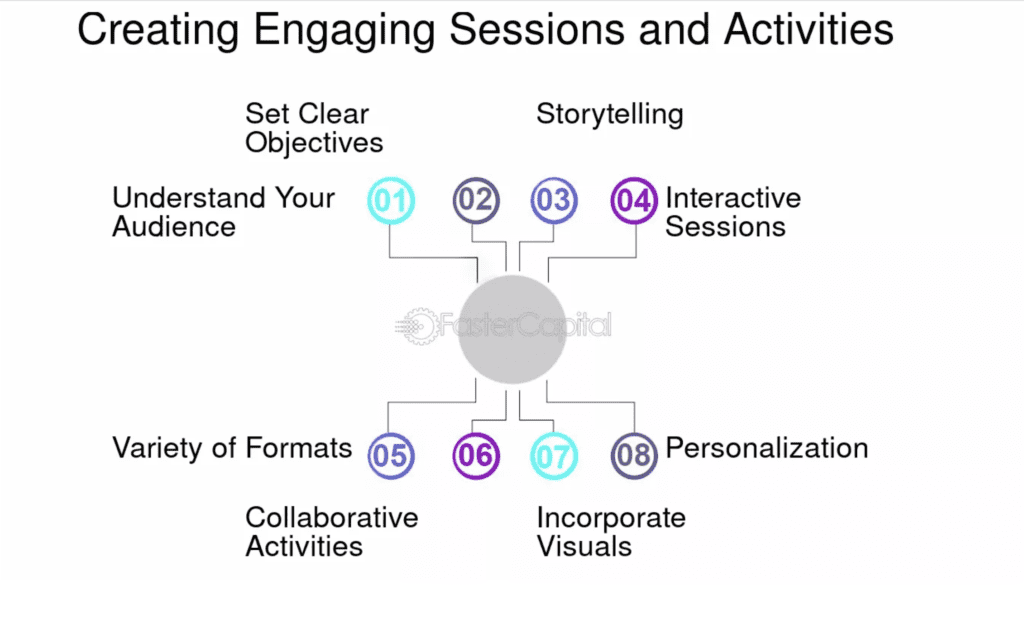
- Tailor Stories to Audience Interests
To maximize content consumption and enhance relevance, use data from dashboards and event apps to pinpoint which sessions captivated your audience most and what content truly resonated.
For instance, younger attendees often respond best to engaging polls and short video blocks. In contrast, older executives typically pay more attention to strategic summaries and ROI-based case studies.
Integrating these findings directly into your event strategy lets you build tailored campaigns that genuinely engage diverse audience segments, ultimately boosting both engagement and ROI.
- Evaluate Story Engagement Metrics
To understand your content’s true impact beyond the event, track recycled content using key metrics like click-through rates, shares, watch time, and comments. These social media metrics offer critical insights, showing your marketing teams precisely how to refine your strategy and enhance event practices.
By blending social analytics with your event data on integrated dashboards, you gain a holistic view of content performance. This allows marketers to dynamically fine-tune campaigns, swiftly identifying top-performing formats or crafting new on-demand content variations. This creates a powerful loop of continuous enhancement, ensuring your content always hits its mark.
Beyond the Event: Sustaining Engagement for Long-Term Impact
To truly understand your content’s long-term success, event marketers must meticulously track how diverse audiences consume social media posts, blogs, videos, and other post-event content.
By analyzing performance data like average watch time, click-throughs, and shares, marketers can precisely determine which storytelling methods resonate most with attendees and deliver the greatest event ROI. These insights don’t just optimize individual pieces; they power a smarter, data-informed event strategy, ensuring your content continues to resonate and make an impact long after the live stream concludes.
Platforms such as HubSpot, Google Analytics, and Sprout Social become essential for monitoring and charting cross-channel performance.
For instance, HubSpot discovered that behaviorally targeted content can increase engagement rates by as much as 80%, providing actionable insights into what truly holds an audience’s interest. Similarly, tracking user paths and scroll depth on landing pages reveals where attention falters, allowing marketers to adjust storytelling structures accordingly.
The long-term value of these measurements extends beyond mere campaign optimization; they enable more confident planning for your next event. Through decisive, data-driven decision-making, you can make content creation more focused in terms of both quality and efficiency—steering clear of time-wasting initiatives that fail to deliver measurable results.
Feedback and Continuous Improvement
Modern event marketing thrives on structured feedback loops to continuously fine-tune performance. Event technologies like Cvent, Bizzabo, and ON24 collect vast amounts of data through real-time behavior tracking, participant social media posts, chat activity, and post-session surveys.
These systems are a goldmine of valuable insights for marketers, influencing everything from tone and message to content mix and delivery channels.
If, for example, a webinar video receives below-average engagement, feedback analytics might reveal it lacked interactive features like quizzes or CTA prompts, or perhaps it didn’t align with a priority demographic’s interests.
Conversely, a session featuring a behind-the-scenes video might garner high shares and comments, indicating a strong emotional connection. This direct comparison empowers teams to confidently decide which formats to scale and which to sunset.
Using a template for feedback gathering—such as standardized surveys, comment forms, and quick emoji ratings—not only accelerates data collection but also ensures consistency across campaigns. Furthermore, sentiment analysis tools like MonkeyLearn or Lexalytics extract qualitative patterns from open-text feedback, revealing emotional tone and subject matter relevance.
This comprehensive data integrates directly into campaign planning, maintaining ongoing alignment with both business goals and audience expectations. It fuels efficiency, clarity, and sustained growth. Each subsequent campaign thus builds on the learning and success of the previous one, establishing a continuous process of learning and development that directly informs event success.
Conclusion
Virtual events are no longer isolated moments; they’ve become a critical, ongoing engine for your event marketing campaign’s success. They give your company an unparalleled opportunity to develop targeted, highly relevant content that resonates with individuals long after the live experience concludes.
By harnessing powerful insights from attendee behavior and implementing smart visual and interactive storytelling, your business can significantly boost content performance, dramatically expand its reach, and maximize event ROI. This directly influences your overall success. Leverage social media and multi-format content to keep your audience engaged well beyond the live event.
Ultimately, a high-level, data-informed content strategy establishes a powerful, ongoing loop of optimization. This makes every subsequent event more successful than the last, allowing your brand to remain competitive, agile, and perfectly aligned with evolving audience needs and industry trends.
Want to take your virtual event content to the next level? Contact our team or download our free content planning template to start making your ideas count today.

